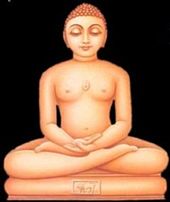Some of Your Best Meditations Can Be At Home
For a lot of us meditating at home is by far the most convenient place to do meditation.It also can be an environment that can introduce a whole cornucopia of distractions. Brainwave entrainment products like binaural beats, isochronic tones and other tips and techniques can help you stay focused. Keeping the number of distractions to a minimum.
Binaural Beats Meditation And Falling Asleep
For some of us, one of the biggest challenges while meditating is trying not to fall asleep. The best time to do meditation is after a few hours of sleep. It is no fun dozing off just as you see a tunnel that you believe is your escape into the astral world.
You had planned on flying over ancient Greece and maybe even dropping in on a lecture by Plato but instead, you are deep in a dream state and being chased by dragons! Talk about frustrating.
So to avoid falling asleep, find the right time of day for you to practice meditation. Our mind is often the most at peace during the early morning before the stresses of the day set in. Try waking up a half hour earlier to get a head start on the day. Meditating with the sunrise is always a serene experience.
An early meditation will also help you turn on a positive state and take on the world during the day with a positive mindset. Brainwave entrainment products, binaural beats and isochronic tones are some of the most effective ways of introducing discipline to your at-home meditation. If you do start to fall asleep, a change in tone will often return you to a state of wakefulness.
Many meditators do reality checks, especially those who engage in astral travel and lucid
dreaming. Most of us are less ambitious. We are focused on achieving a state of deep relaxation and entering the space between wakefulness and dreaming. Reality checks are useful at all stages of your meditation. From time to time, press your thumb into the palm of your hand, or employ whatever reality check you feel most comfortable with.
Meditation Discipline
Most meditators find their mind will wander more easily at home than in a more structured guided meditation class. Even experienced meditators appreciate doing guided meditation from time to time.
As your experience increases your ability to block out the unwanted distractions becomes easier. There are a number of good meditation recordings and brainwave entrainment products to keep your meditations at home on track.
Maintaining a regular, daily meditation schedule will help you make the required adjustments to ensure the best meditation experience.
Your Personal Meditation Place and Position
It is usually best to create one special place for meditation in your home environment. You will come to associate this place with a relaxed, tranquil meditative state and your state will begin to shift as soon as you enter the room.
Be creative. Build a Buddhist alter if that is what works for you. The key is to make it your own place and a place where you recognize it as a place for meditating. Or perhaps you want to recreate your favourite meadowland from childhood in your garden. Really, it’s whatever works for you. This is your special place.
At-home meditation should be comfortable but not too cozy. Do not try and do meditation in your favorite lounge chair or hammock in the backyard. Keep your spine to allow energy to flow up through the energy channels aligned with the chakras.
Do not confine your meditation practice to one place and one time during the day. You can take your at-home meditation with you during the day. I actually have a friend that said some of her best meditations happened while she was washing the dishes:).
When you reach a meditative state you like, anchor it. An anchor is any physical stimulus you choose. It may be as simple as touching your thumb and baby finger together. The next time you are stressed out by a work task – before leading a team meeting or delivering a speech, for example – call up your anchor, relax, smile and remind yourself that you are going to do great.
What anchors do you use? Do you use binaural beats mixed with anything else? Do you combine isochronic tones with beats and sounds?
I’d love to hear your comments and thoughts so feel free to add them below.

